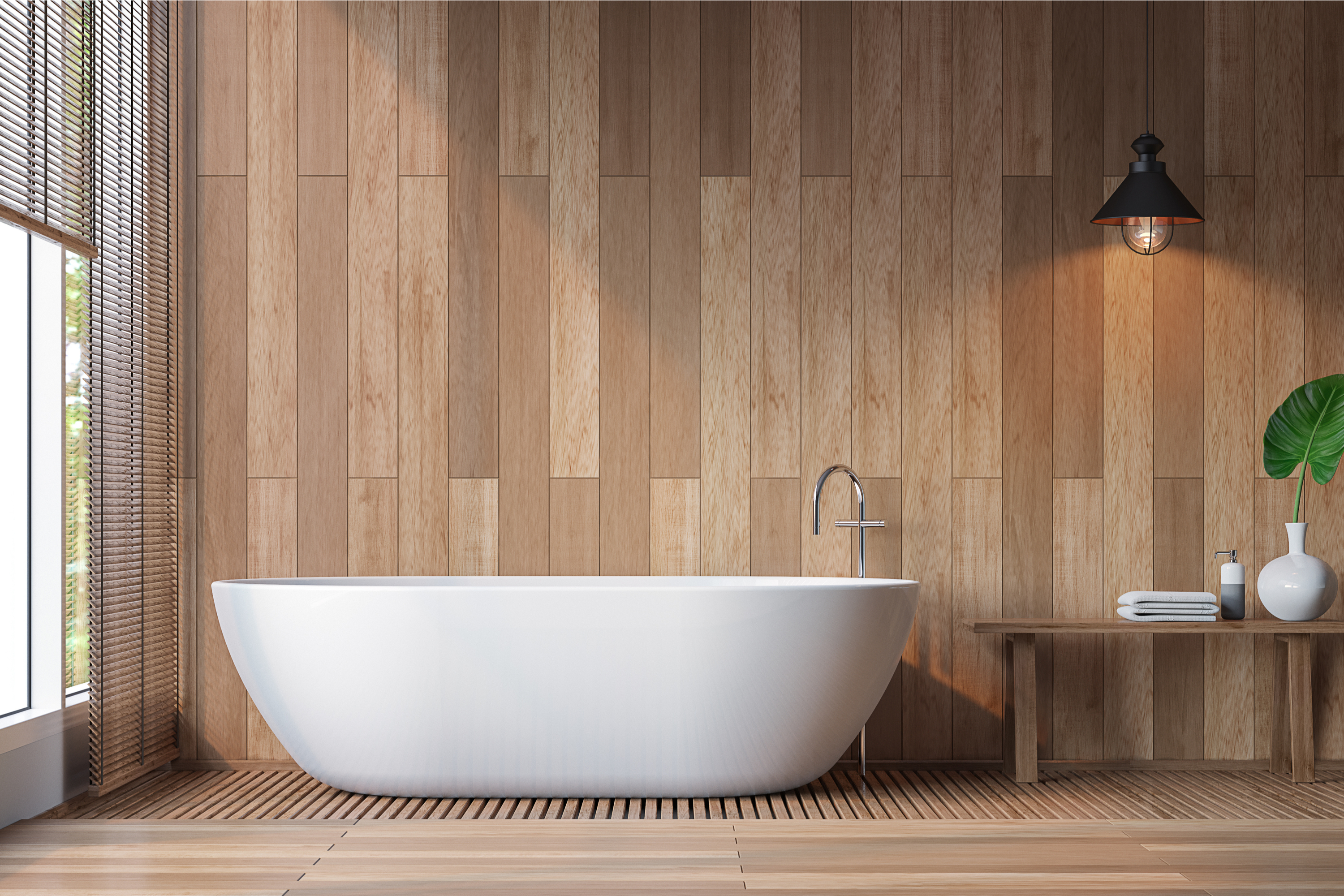One of the latest trends of 2025 inspires elegance, boldness, and luxury. Material drenching is capturing the attention of many homeowners who crave a refined simplicity that makes a statement in their spaces. But what is material drenching? Today, we’ll share everything you need to know about this up-and-coming design aesthetic.
What is material drenching?

Material drenching is an interior aesthetic that features a singular material like stone, tile, wood, or metal integrated on multiple surfaces in the home. The effect is often bold, impactful, and luxurious. Designers choose a specific material that can be “drenched” in a space by using it in several aspects of the design.
An example of material drenching could look like a kitchen with wood-paneled walls, smooth oak cabinets, hardwood flooring, and a few wood pieces speckled throughout the room. Some designs might layer in other materials to create more separation, while others will boldly intersperse the material in nearly every space of the design.
History of material drenching
The rise in popularity of material drenching coincides with the renewed interest in color drenching — an aesthetic where a space is coated in a single color for a monochromatic effect. Both aesthetics invite a contemporary and luxurious feel to our spaces and have become some of the trendiest looks in recent interior designs.
While material drenching shares many similarities with color drenching, it also has older origins. In the 1920s, modernists emerged to push back against gaudy and overzealous designs that featured plenty of layers, frills, and opulence. Instead, interiors trended toward simplicity. Material drenching offered a streamlined and minimal aesthetic while creating an impactful visual effect.
How to use material drenching in your space

If the sleek yet bold interiors of material drenching capture your attention, we have a few essential tips on how to best invite this aesthetic to your space.
Layer the material
Material drenching requires you to get creative in how you integrate the material into your home. One struggle with material drenching is a lack of dimension and form. Repeating the same color and texture throughout a space can result in the room feeling flat and lifeless. To counteract this, be sure to layer your material with itself to create a more three-dimensional effect.
For example, if you’re material drenching with stone, use it on the fireplace, the floors, and a feature wall. Then, pair stone furniture pieces like a side table or bench alongside other stone features. Or, if you’re using wood, layer some bowls on the coffee table using the same material to highlight the forms in your design.
Use shape, size, and color for variety
When material drenching, be mindful of how you use shape, size, and color to create the layered effect mentioned above. Drenching your space in one material requires you to use form to create depth and dimension when you can.
Consider using different types and cuts of stone in a stone-drenched design. Or, try various sizes and colors of tile when tile-drenching a bathroom. For example, pairing concrete with natural stone like granite or quartz can enhance your material-drenched space while offering visual depth. Alternatively, using larger rectangular tiles on the floor alongside hexagonal or smaller tiles on the wall will provide more interest in a tile-drenched design.
Start small
It’s best to start small when material drenching by gradually adding new pieces. While full-blown material-drenched spaces are in style and popular in many luxury homes, pulling off the aesthetic is tricky. Start by adding your chosen material to an accent wall or the floor. From there, layer your material through furniture pieces and decor.
Be intentional with placement
You’ll also want to be intentional with the placement of your material drenching. Consider the type of material you wish to use and the kind of environment best suited for it. If you favor wood, it may be best used in a living space rather than a bathroom, where the wood could warp.
Also, you’ll need to be mindful of how to express your material drenching. Simply adding decor or furniture in your chosen material may not be enough to highlight a drenching effect. Try using your material on your walls, ceiling, or floor first to create the drenched look.
Know when to use other materials
Of course, too much of the same material can look overwhelming in some spaces. We all remember the ’70s paneling craze where wood covered the walls, floors, some ceilings, and was the primary material in many furniture pieces. Too much of the material can overpower your design. However, used in a minimal or contemporary setting, material drenching can appear bold and innovative.
Like color drenching, material drenching aims to make a bold statement while introducing more simplicity into our spaces. Rather than over-texturizing and layering materials to pack a visual punch, material drenching provides a luxe and sophisticated take on monochromatic themes. Try using this trend in your home to create a chic and contemporary space.




